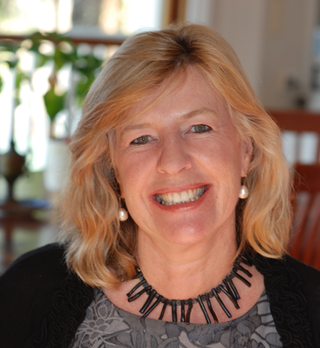- In celebration of Ēostre, a round up of food and farming photos and a fifth question.
- It never rains but it pours: unprecedented typhoons in Hokkaido, Japan, last year have resulted in a potato chip shortage and hoarding, not least because although imports from elsewhere are available, one of the main Japanese potato chip manufacturers has decided that “a majority of the American spuds are of insufficient quality and cannot cover the deficit”.
- James Wong explains how “mustard gives broccoli superpowers”. I always thought broccoli already had superpowers. Having read the caveats in the original research paper, he may be jumping the gun slightly. Broccoli remains delicious under all circumstances.
- Ian Mosby had a lot of fun writing a special article about Canada’s culinary history and contributions to food culture. Yes, Virginia, it goes beyond poutine and Tim Horton’s. Could repay further study, in which case …
- Culinary Historians of New York invites submissions for the 2017 CHNY Scholar’s Grant in support of research and scholarship in the field of culinary history.
- Bonus shameless self-promotion: Previous winners have appeared on Eat This Podcast.
Australia: where healthier diets are cheaper … ... but people spend more to eat badly
Podcast: Play in new window | Download (Duration: 22:36 — 18.4MB)
Subscribe: Google Podcasts | Spotify | Android | RSS | More
 No country has solved the problem of how to ensure that all of its people have enough safe, nutritious food to eat year round, and the variety of approaches is both bewildering and informative. Australia, for example, has a welfare system that doesn’t make any specific provision for food. But it does exempt certain healthier foods – such as fruit and veg, bread, fresh meat, milk and eggs – from the Good and Services Tax. That makes them cheaper than they might otherwise be, a sort of thin subsidy. And yet, Australians prefer to spend more to eat an unhealthy diet. They devote almost 60 cents of every dollar they spend on food to unhealthy stuff.
No country has solved the problem of how to ensure that all of its people have enough safe, nutritious food to eat year round, and the variety of approaches is both bewildering and informative. Australia, for example, has a welfare system that doesn’t make any specific provision for food. But it does exempt certain healthier foods – such as fruit and veg, bread, fresh meat, milk and eggs – from the Good and Services Tax. That makes them cheaper than they might otherwise be, a sort of thin subsidy. And yet, Australians prefer to spend more to eat an unhealthy diet. They devote almost 60 cents of every dollar they spend on food to unhealthy stuff.
What’s going on? Professor Amanda Lee looked at the cost of what Australians actually eat, based on a large survey, compared to the cost of the country’s national guide to healthy eating. The results were pretty surprising, so surprising that for a while journals refused to publish. Less of a surprise, perhaps, was that people give the answers they think researchers want to hear: among the poorest communities, fully a quarter of the calories actually consumed are missing from reports, and people say they eat eight times more fruit and veg than they actually do.
Notes
- The research paper that prompted our conversation was Testing the price and affordability of healthy and current (unhealthy) diets and the potential impacts of policy change in Australia.
- Another important paper is Are Healthy Foods Really More Expensive? It Depends on How You Measure the Price, from the USDA.
- I gave up trying to find a picture of Australian junk food; it looks just the same as more less all junk food, except for the Cherry Ripes. The banner photograph is a detail from Lizard Dreaming 2 by Sue Atkins, a descendant of the Boandik People from Adelaide in South Australia. The image took some tracking down, because the original site had been hacked in various horrible ways, and I have not asked for permission.
Eat This Newsletter 052
3 April 2017
- If you’re in the least bit interested in “the truth” about African agriculture, this special issue of the journal Food Policy is for you. I haven’t read it all yet, but I really should try to do an episode with Luc Christiaensen, who edited the special issue.
- If you want to keep up with the academics (even if you are an academic) you need to speak the lingo. Rachel Laudan offers useful insights into “food systems”.
- To him that hath, shall be given: The League of Kitchens in NYC sounds fun and rewarding. I found out about it from a column on Mark Bittman’s site.
- Dan Etherington has also been learning about breads, in his case Mamoosh pita, in Newhaven in Sussex (England).
Mistaken about mayonnaise — and many other foods Food history and alternative realities

Podcast: Play in new window | Download (Duration: 23:47 — 19.3MB)
Subscribe: Google Podcasts | Spotify | Android | RSS | More
 Who invented mayonnaise? Could boiling down tonnes of cattle concentrate beef’s nutritious qualities? Did lemonade put a halt to the plague in Paris?
Who invented mayonnaise? Could boiling down tonnes of cattle concentrate beef’s nutritious qualities? Did lemonade put a halt to the plague in Paris?
Tom Nealon writes about these and (many) other topics in his book Food Fights and Culture Wars, a title that does the contents no favours at all. The obvious temptation is to talk about the book as a feast of food history, a smörgåsbord of tasty treats, some old, some new, all interesting. It is all that and more, not least because it is lavishly illustrated with fascinating images. All in all, a great read, but a hard topic for an episode, because the only thing that really connects all those dots is Tom Nealon himself. We talked a lot, covered a lot of ground and, inevitably, left a lot of things out.
I think I disagree with Tom on at least one thing: cannibalism. I’m just not as persuaded as he is by the evidence, and his argument that if you’re eating “others” from over the mountain, then you’re not really eating people, cuts both ways. What better way to make people seem fundamentally different from “us” than to stress that “they” eat people? But that’s a topic for another episode, I hope.
Notes
- Food Fights & Culture Wars is currently riding high in Amazon’s New Releases.
- Lots more details on mayonnaise in Tom Nealon’s original account of Salsa Mahonesa and the Seven Years War.
- To be honest, I had no idea mayonnaise was a topic of such intense interest, but it is.
- For a fine collection of Bovril nonsense, this is the place.
But there were people starving in China …
… and the Romans did knead
Bread Matters magazine recently linked to an interview with Jim Lahey, “inventor” of no-knead bread. I eventually tracked it down ((The audio here is not what it ought to be.)) and gave it a listen, and on the whole it is very interesting. Two things, however, irked me.
One, relatively trivial, is an idiot comment on the Serious Eats website. In the course of discussing Lahey’s memories of his childhood family table, he mentioned having to clean his plate. Host Ed Levine butted in “because people are starving in China”. Which was, exactly, the reason we were given, as children, for needing to clean our plates. ((I suspect I am a little older than Lahey, and in my case it was India, rather than China, but hey.)) A commenter called luosha was incensed:
“… because people are starving in China.” Levine, 2016. I can’t decide whether it’s worse that Levine is perpetuating outdated stereotypes, or that he thinks this is a funny thing to say.
Worse, the pusillanimous Levine bothered to reply:
My apologies for an obvious perpetuation of of outdated stereotypes. I should not have said it. Won’t happen again.
Sheesh. They were talking about a time in the 1950s or 60s, when there actually were people starving in China and in India. Lots of them. That there aren’t as many now (though malnutrition remains worryingly high in India despite everything) is a wonderful thing. But are we to ignore history completely? I hope not.
And speaking of ignoring history, Jim Lahey offered his opinion that the Romans too did not knead their bread, prefiguring his own success by a couple of thousand years.
I don’t know how he came to this notion, but a lot of archaeologists would disagree. Kneading by hand is shown on various bits of sculpture and, as befits the production of bread on an industrial scale, there were also kneading machines. The Tomb of Eurysaces near the main Rome train station has what are probably the basins of kneading machines as part of its decoration. Kneading machines have been found at Pompeii and elsewhere. A recent book A Handbook of Food Processing in Classical Rome has an entire section on kneading.
I’m all for letting time and water do the work of giving structure to my bread, though I don’t actually go the whole no-knead hog any more. But to add no-knead bread to the litany of things the Romans did for us seems a stretch too far.
